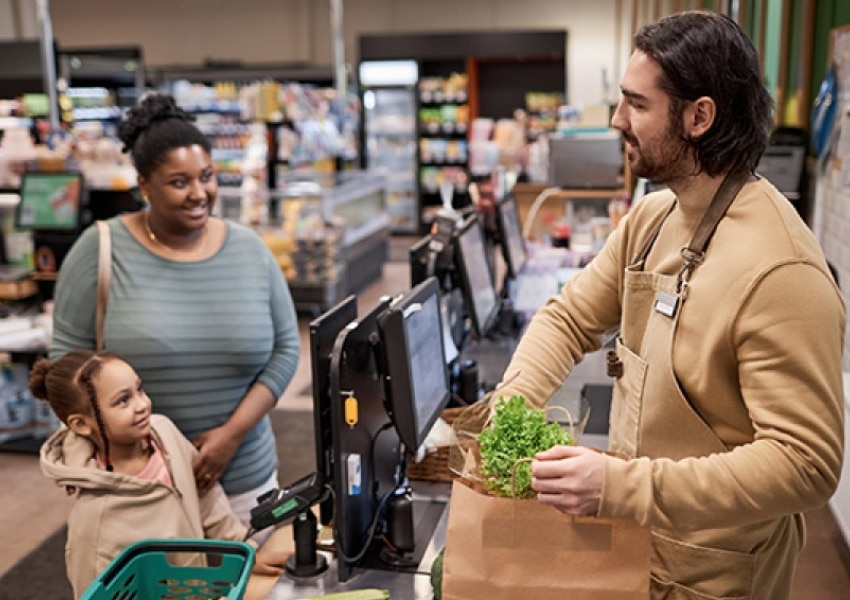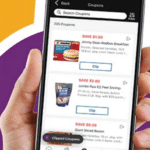
It appears that automatically granting digital coupons to shoppers without digital access was only the beginning. Now, two state lawmakers are proposing automatically granting all coupons to grocery shoppers who receive government assistance.
Democratic Assemblywoman Alicia Hyndman and Democratic State Senator Leroy Comrie of New York have introduced companion bills that would require stores to apply all available coupons to grocery purchases made by participants in the Supplemental Nutrition Assistance Program (SNAP), the successor to the former Food Stamp Program.
The bill states that grocery retailers should “establish a mechanism to apply any available coupons or discounts to purchases made by eligible recipients of SNAP benefits.” Any such coupons or discounts must be “automatically applied when a customer makes a purchase,” the bill goes on, emphasizing that the eligible shopper “shall not be required to provide a physical coupon in order to receive the discount.”
The imprecise phrasing of the bill raises a host of questions, none of which either lawmaker has answered, as neither responded to requests for comment. Does “any available coupons” refer to digital coupons, or does it literally mean “any” coupons? If there was a coupon in, say, the Sunday newspaper three weeks ago, will a store be required to apply that coupon to an eligible purchase “automatically”? If the bill actually means to refer to digital coupons, will the shopper need to have a loyalty account, or will all available coupon discounts need to be applied whether or not they’ve been clipped?
So if this bill were to become law as is, it’s unclear how it would actually work in practice. That said, it does at least appear to be a well-meaning effort to ensure that shoppers with limited grocery funds get the biggest bang for their buck.
Several studies in recent years have shown that SNAP recipients are among the shoppers least likely to use coupons at all. A 2021 study by the market research firm IRI found that SNAP recipients were more likely to shop at stores with everyday low prices and least likely to use coupons or take advantage of store sales. “SNAP shoppers are not as deal-driven,” IRI noted.
Earlier, a 2018 study conducted by Brown University researchers found that SNAP recipients end up overspending, using up their benefits more quickly and spending too much money out of pocket to make up the difference, because they’re not using coupons as often as higher-income shoppers are. Part of the reason, they suggested, was psychological – SNAP recipients tend to treat their benefits as “free money” and don’t spend it as wisely as they do if it was coming out of their own pocket. But it’s also partly due to economics – lower-income shoppers are less likely to buy newspapers and have access to Sunday coupon inserts, and they’re less likely to have internet access in order to download digital coupons.
So the New York bill aims to give SNAP recipients easy access to coupons they might otherwise miss out on, as a way to extend their benefits and ensure they don’t have to spend any more than necessary.
The measure is the latest state effort to mandate how and to whom stores should apply coupons. A half-dozen states are currently considering legislation that would require retailers to make it easier for digitally-disconnected shoppers to access digital coupons. Two of those states would require all digital coupons to be applied automatically to some or all shoppers’ purchases.
Opponents of those bills have pointed out that coupons are not meant to be egalitarian, equally applied to everyone’s purchases. They’re a marketing tool, not a charitable endeavor; they’re meant to incentivize a purchase, to attract a shopper’s attention and encourage them to make a purchase they otherwise might not have – not to reward a shopper for purchasing a product they would have purchased anyway, out of the goodness of the retailer’s or manufacturer’s heart.
But when higher-income shoppers with a newspaper subscription or a smartphone have easier access to coupons than their lower-income counterparts who need the discounts the most, the argument against trying to give those shoppers a helping hand can seem heartless. That likely explains the increasing popularity of state-level proposals to achieve coupon equity.
Retailers and manufacturers being forced to provide coupon discounts to all, though, could have the unintended consequence of there being fewer coupons for anyone. So if any of these bills become law and that ends up happening, supporters of these plans might want to be careful what they wish for – or what well-meaning bills they propose next.
Image source: USDA










